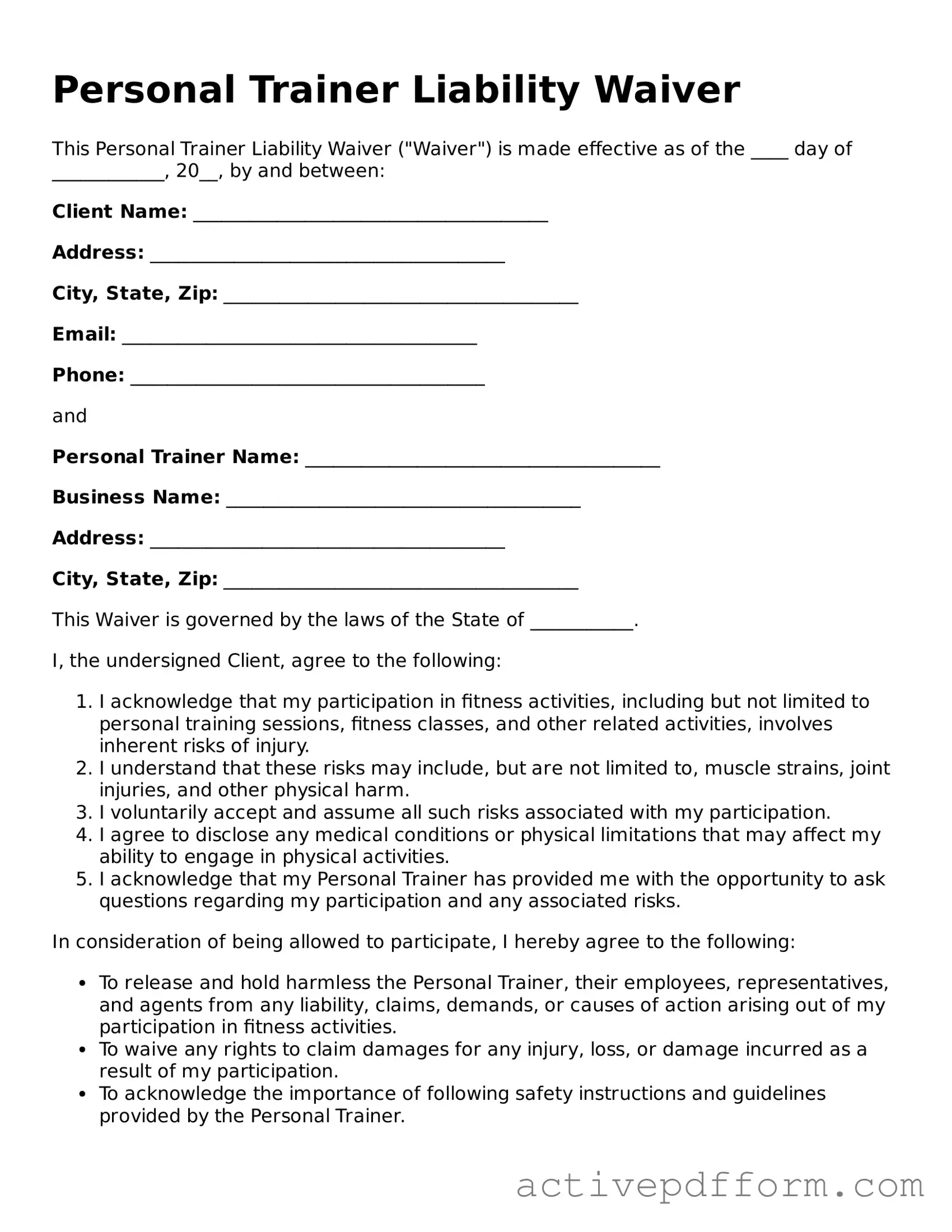Personal Trainer Liability Waiver
This Personal Trainer Liability Waiver ("Waiver") is made effective as of the ____ day of ____________, 20__, by and between:
Client Name: ______________________________________
Address: ______________________________________
City, State, Zip: ______________________________________
Email: ______________________________________
Phone: ______________________________________
and
Personal Trainer Name: ______________________________________
Business Name: ______________________________________
Address: ______________________________________
City, State, Zip: ______________________________________
This Waiver is governed by the laws of the State of ___________.
I, the undersigned Client, agree to the following:
- I acknowledge that my participation in fitness activities, including but not limited to personal training sessions, fitness classes, and other related activities, involves inherent risks of injury.
- I understand that these risks may include, but are not limited to, muscle strains, joint injuries, and other physical harm.
- I voluntarily accept and assume all such risks associated with my participation.
- I agree to disclose any medical conditions or physical limitations that may affect my ability to engage in physical activities.
- I acknowledge that my Personal Trainer has provided me with the opportunity to ask questions regarding my participation and any associated risks.
In consideration of being allowed to participate, I hereby agree to the following:
- To release and hold harmless the Personal Trainer, their employees, representatives, and agents from any liability, claims, demands, or causes of action arising out of my participation in fitness activities.
- To waive any rights to claim damages for any injury, loss, or damage incurred as a result of my participation.
- To acknowledge the importance of following safety instructions and guidelines provided by the Personal Trainer.
This Waiver represents the entire agreement between the parties and supersedes all prior agreements or understandings regarding this subject matter. No modification shall be effective unless in writing and signed by both parties.
By signing below, I agree to the terms of this Waiver.
Client Signature: ______________________________________
Date: ______________________________________
Trainer Signature: ______________________________________
Date: ______________________________________
